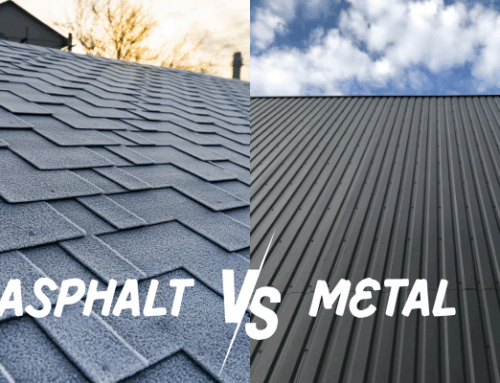When it comes to building or renovating your home, the right roof design is an important decision. Both flat and sloped roofs have their own pros and cons, affecting everything from looks and maintenance to cost and durability. Flat roofs give a modern, minimalist aesthetic with potential space for additional outdoor areas, while sloped roofs allows better drainage and longevity as well as a dash of classic appearance. But which is the right one for your home? In this blog, we will discuss functionality, climate, costs and long-term benefits of flats and sloped roofs to help you decide what is best for you.
1. Difference between Flat Roof and Slope Roof
Before we get into the pros and cons of each roofing type, let’s define what they are:
Flat Roofs: These roofs are not entirely flat, but have a very slight slope (usually 1 to 10 degrees) to help with drainage. These are very popular in modern and industrial-style architecture.
Sloped Roofs: These roofs are distinguished by an obvious pitch with the angle hinging upon both style and climate requirements. Gable, hip, and mansard roofs are traditional categories of this.
Each type serves a different function and complements various styles and surrounding environments.
2. Design Elements and Architectural Craftsmanship
Your roof is one of the main elements contributing to your home’s aesthetics.
Flat Roofs: These are not the ones you would generally find in traditional or colonial houses, flat roofs are usually associated with contemporary, modern and minimalist architecture and give a very sleek, clean look. They are frequently used in urban environments, industrial buildings or upscale residential homes.
Sloped Roofs: Provide a more classic look and are often found in areas with suburban homes. However, they can also look rustic, elegant or classic depending on the angle and design.
Which One is Right for You?
You may consider a flat roof if you want a futuristic or minimalistic design. A sloped roof is the better option if you want a timeless, versatile look.
3. Durability and Longevity
The robustness of your house top is directly proportional to its resistance to water, wind, changes in temperature, and so on.
Flat Roofs:
- They are more likely to gather water due to the less steepness, which eventually causes leakages as well as structural problems over time.
- Try using thick waterproofing membranes like the TPO and PVC membrane or synthetic rubber, as well as EPDM.
Sloped Roofs:
- Increased water drainage, which in turn minimizes the occurrence of ponding and leaks.
- They are resilient and can even withstand extreme weather with heavy snow, rain, and wind.
- Their expected lifespan is much longer, usually 30 to 50 years, with even greater durability in the case of metal or slate use.
Which One is Right for You?
If your objective is to have a long-lasting roof with minimal maintenance, then a pitched roof would be the right choice. A flat membrane system can be a successful solution given proper waterproofing but a regular check-up and maintenance are needed to favor their life.
4. Climate Compatibility
Climate is a key factor in determining the best roofing material for your home in your area.
Flat Roofs:
- Great for places with hot, dry climates with little rainfall and snow accumulation.
- More prone to water damage in areas of snow or rain, and needs effective drainage.
Sloped Roofs:
- Ideal for sites with lots of rain or snow, as the angled design allows water and snow to easily slide off.
- Provides more resistance to strong winds and drastic temperatures.
Choosing the Right Option:
If you live in an area that sees a lot of rain or snow, a sloped roof is a better bet. On the other hand, a flat roof could be a viable option if you live in a dry, hot climate.
5. Cost Considerations
The price includes the roofing system itself plus the installation, materials and maintenance over the long term.
Flat Roofs:
- Typically have lower installation costs because they require less material and are less complex to design.
- Cheaper to build as they take less time and labour to build.
- Costlier in long run — As with water-proofing, continuous repair costs increase.
Sloped Roofs:
- Initial installation price is greater because of more materials (shingles or tiles) and more complicated building.
- Costlier to maintain in the long run since they manage water drainage more effectively.
- Increased durability means less repair costs over time.
Which One is Right for You?
So, if you don’t have enough budget to spend in the beginning, flat roof construction option can be a better option.
Which Roof Type is Best for You?
| Factor | Flat Roof | Sloped Roof |
|---|---|---|
| Aesthetics | Modern, sleek | Traditional, timeless |
| Durability | 15–30 years | 30–50+ years |
| Climate Suitability | Best for dry, warm climates | Best for areas with heavy rain/snow |
| Cost | Lower upfront, higher maintenance | Higher upfront, lower maintenance |
| Space Utilization | Usable space for rooftop gardens, HVAC, solar panels | Usable attic for storage or extra rooms |
| Maintenance | Requires frequent inspections and waterproofing | Requires less maintenance, durable |
| Energy Efficiency | Requires extra insulation | Naturally better insulation |
Conclusion
The installation of a flat roof system is the most suitable for maximizing a roof’s function as a terrace, a garden, and as a place to install solar equipment. In contrast, the flat roof with a convertible attic is more suitable for using the space for storage or additional living quarters.
The reasons for which type of roof one ought to select differ from person to person, however, it would make the most sense if their focus were on relevant priorities such as personal taste, expenditure, weather conditions, and the design style of the building. Considering the aspects of weather resistance, price, and strength, flat roofs are clearly the best choice of all.
As far as the lifespan is concerned, the most important problem relies on the steps taken to install or mount it, as well as the level of maintenance carried out regularly.






